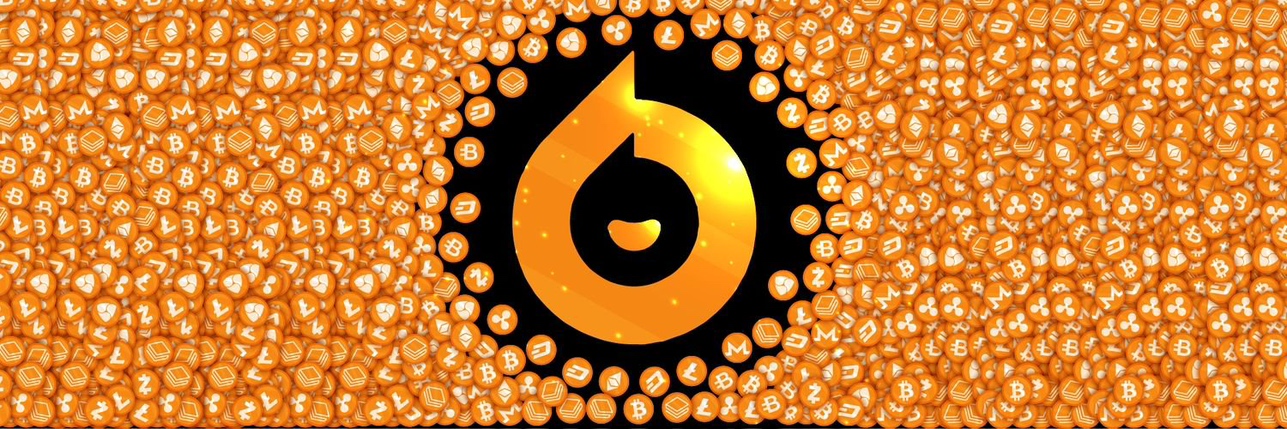


Cena FlowFLOW
Konwerter FLOW na PLN
Czy uważasz, że cena Flow dziś wzrośnie czy spadnie?
Informacje o Flow (FLOW)
Czym jest Flow?
Flow to blockchain warstwy 1 stworzony z myślą o szerokiej gamie aplikacji, gier i cyfrowych aktywów. Projekt został założony przez Dapper Labs, twórców gry blockchain CryptoKitties. Flow początkowo miał być odpowiedzią na problemy z przeciążeniem sieci Ethereum po sukcesie CryptoKitties. Dapper Labs stworzyła niestandardowy blockchain Flow, dostosowany do ich własnych wymagań.
Flow jest zoptymalizowany pod kątem gier i aplikacji konsumenckich. Potencjalnie może on przetworzyć transakcje dla milionów aktywnych użytkowników. Blockchain został zaprojektowany z myślą o nowych przypadkach użycia technologii DLT, takich jak niewymienialne tokeny (NFT). Flow z powodzeniem zasilił aplikacje blockchain, takie jak chociażby kolekcje NFT – NBA Top Shot. W jej przypadku, transakcje opiewały na kwotę miliardów dolarów.
Materiały
Biała księga: https://flow.com/technical-paper
Oficjalna strona internetowa: https://flow.com/
Jak działa Flow?
Flow wykorzystuje unikalną architekturę wielozadaniową. Umożliwia ona skalowanie bez shardingu, metody stosowanej przez inne blockchainy w celu zapewnienia skalowalności. W architekturze Flow zadania tradycyjnie wykonywane przez jednego walidatora są rozproszone na cztery różne typy węzłów: węzły konsensusu, węzły wykonawcze, węzły weryfikacyjne i węzły gromadzące. Każdy typ węzła wykonuje wyspecjalizowane zadanie, a każdy z nich przyczynia się do walidacji każdej transakcji.
Węzły konsensusu ustalają obecność i kolejność transakcji w blockchainie Flow. Węzły wykonawcze wykonują obliczenia potrzebne do sfinalizowania i zatwierdzenia transakcji Flow. Węzły weryfikacyjne nadzorują i potwierdzają działania węzłów wykonawczych. Węzły gromadzące dane wzmacniają łączność sieciową i dostępność danych w całym blockchainie Flow. Ten podział pracy między węzłami rozciąga się na różne fazy walidacji w każdej transakcji, zapewniając zwiększoną wydajność i skalowalność.
Czym jest token FLOW?
FLOW to natywna kryptowaluta blockchaina Flow, służąca jako środek wymiany w ekosystemie i warunek wstępny uczestnictwa w sieci jako walidator. Blockchain Flow wykorzystuje zmodyfikowaną wersję mechanizmu konsensusu proof-of-stake. Walidatorzy muszą stakować określoną liczbę tokenów FLOW, aby dołączyć do sieci.
FLOW służy do uiszczania opłat transakcyjnych, uczestniczenia w zarządzaniu siecią i zdobywania nagród poprzez staking. Deweloperzy używają również FLOW do wdrażania i zarządzania smart kontraktami na blockchainie Flow.
Wpływ Flow na finanse
Wpływ Flow na sektor finansowy jest widoczny poprzez wspieranie NFT i gier opartych na blockchainie. NFT stały się kluczowym elementem gospodarki cyfrowej, zapewniając artystom, twórcom i markom innowacyjne sposoby zarabiania na ich cyfrowych aktywach. Zdolność Flow do obsługi dużych wolumenów transakcji, w połączeniu z naciskiem na przyjazny dla użytkownika onboarding, sprawiają, że jest to atrakcyjna platforma dla rynków NFT i innych zdecentralizowanych aplikacji.
Wielowęzłowa struktura Flow i programowanie zorientowane na zasoby sprawiają, że jest to idealna platforma do tworzenia zdecentralizowanych aplikacji finansowych (DeFi). Flow umożliwia szybkie i opłacalne transakcje, dzięki czemu może efektywnie obsługiwać różne aplikacje finansowe, w tym zdecentralizowane giełdy, platformy pożyczkowe i stablecoiny. Zdolność Flow do obsługi transakcji dla milionów aktywnych użytkowników pozycjonuje go jako silnego konkurenta w rozwijającej się branży DeFi.
Co decyduje o cenie Flow
Cena kryptowaluty Flow jest przedmiotem zainteresowania zarówno inwestorów, jak i entuzjastów. Prognoza ceny Flow (FLOW) zależy od niezliczonych czynników związanych z technologią blockchain i dynamiką rynku. Eksperci często zagłębiają się w analizę cen blockchain Flow, aby ocenić potencjalną trajektorię w oparciu o różne prognozy cen kryptowalut Flow. Analiza historii cen kryptowaluty Flow służy jako świadectwo jej odporności i potencjalnego wzrostu na rynku. Co więcej, kapitalizacja rynkowa tokena Flow jest istotnym wskaźnikiem jego pozycji na rynku kryptowalut. Często dyktuje trendy w cenie FLOW USD.
Inwestorzy uważnie obserwują cenę kryptowaluty Flow na żywo. Należy jednak pamiętać, że obecna cena tokena Flow zależy od różnych czynników, w tym popytu rynkowego, postępu technologicznego i szerszych nastrojów w sektorze kryptowalut. Na dzisiejszą cenę tokena Flow spory wpływ mają również najnowsze wiadomości dotyczące kryptowaluty Flow, które mogą powodować znaczne wahania. Platformy takie jak giełda Bitget oferują płynne doświadczenie podczas zakupu kryptowaluty Flow. Warto też znaleźć najlepszy portfel Flow (FLOW), aby zabezpieczyć swoje inwestycje i zoptymalizować zwrot z inwestycji Flow (FLOW).
Zarówno prognoza ceny tokena Flow na 2023 r., jak i prognoza ceny tokena Flow na 2024 r. są tematami gorących dyskusji na różnych forach i w kręgach inwestycyjnych. Zarówno analitycy, jak i entuzjaści uważnie analizują wykres cen tokenów FLOW, aby rozszyfrować wzorce i trendy, które mogą wskazywać na przyszłość kryptowaluty Flow. W miarę ewolucji rynku inwestorzy powinni śledzić prognozy ceny Flow (FLOW) na 2023 r., aby podejmować świadome decyzje.
Podsumowując, na cenę kryptowalut Flow wpływa złożona interakcja dynamiki rynku, postępu technologicznego i nastrojów inwestorów. Kapitalizacja Flow i dzisiejszy kurs FLOW będą kluczowymi wskaźnikami przyszłej trajektorii projektu. Niezależnie od tego, czy chcesz kupić kryptowalutę Flow, czy też uważnie obserwujesz przyszłość kryptowaluty Flow, bycie na bieżąco z najnowszymi wydarzeniami i analizowanie rynku to klucz do poruszania się po tętniącym życiem i stale ewoluującym rynku kryptowalut.
Raport z analizy AI na temat Flow
Cena Flow w PLN na żywo dzisiaj
Historia cen Flow (PLN)
 Najniższa cena
Najniższa cena Najwyższa cena
Najwyższa cena 
Jaka jest najwyższa cena Flow?
Jaka jest najniższa cena Flow?
Prognoza ceny Flow
Kiedy jest dobry moment na zakup FLOW? Czy zalecane jest teraz kupno lub sprzedaż FLOW?
Jaka będzie cena FLOW w 2026?
Jaka będzie cena FLOW w 2031?
Popularne promocje
Często zadawane pytania
Jakie czynniki wpływają na cenę Flow?
W jaki sposób relacja Flow z dużymi markami wpływa na jego cenę?
Czy cena Flow może wzrosnąć wraz z zwiększoną adopcją blockchain?
Czy Flow jest podatny na zmienność rynku?
Jaki wpływ mają nowe projekty NFT na Flow na jego cenę?
Jak czynniki makroekonomiczne wpływają na cenę Flow?
Czy wydanie nowych funkcji na blockchainie Flow wpływa na jego cenę?
Jaką rolę odgrywa wolumen handlu na Bitget w ruchu cen Flow?
Jak naruszenia bezpieczeństwa lub problemy z siecią wpływają na cenę Flow?
Czy są jakieś nadchodzące wydarzenia, które mogą wpłynąć na cenę Flow?
Jaka jest obecna cena Flow?
Czym jest 24-godzinny wolumen obrotu Flow?
Jaka jest najwyższa dotychczasowa wartość Flow?
Czy mogę kupić Flow na Bitget?
Czy mogę uzyskać stały dochód z inwestycji w Flow?
Gdzie mogę kupić Flow z najniższą opłatą?
Aktualności związane z Flow
Aktualizacje: Flow
Doodles (DOOD): Kolorowa podróż od NFT do globalnej marki medialnej
Kluczowe informacje o modelu Stock-to-Flow: niedobór napędza wartość
Czym jest Particle Network (PARTI)?
Przewidywania instytucjonalne i spostrzeżenia dotyczące wyceny: 100 tys. dolarów, 1 mln dolarów, 3 mln dolarów
Rajd Bitcoina: Perspektywy na poziom 100 tys. dolarów – i jeszcze dalej
Bitget Hot Takes (5-11 czerwca)
Wartość i cena Ethereum (część 1)
Podstawy Bitcoin: Wartość i cena Bitcoina
Rynek Flow
Posiadane Flow według koncentracji
Adresy Flow według czasu posiadania

Globalne ceny Flow
- 1
- 2
- 3
- 4
- 5
Ceny powiązanych kryptowalut
Ceny nowo notowanych monet na Bitget
Jak kupić Flow(FLOW)

Utwórz darmowe konto Bitget

Zweryfikuj swoje konto

Konwertuj FLOW na PLN
Kup więcej
Gdzie mogę kupić Flow (FLOW)?
Sekcja wideo — szybka weryfikacja, szybki handel

Konwerter FLOW na PLN
Oceny Flow
Bitget Insights





Dodatkowe informacje na temat Flow
Omówienie monety
O monecie
Informacje handlowe
Aktualizacje monety
Handluj
Earn
FLOW/USDT
SpotFLOW/USDT
Depozyt zabezpieczającyFLOW/USDT
Kontrakty futures zabezpieczone USDT








Dane z mediów społecznościowych dot. Flow
W ciągu ostatnich 24 godzin wynik sentymentu mediów społecznościowych wobec Flow wynosił 2.1, a sentyment mediów społecznościowych do trendu cenowego Flow wynosił Niedźwiedzi. Ogólny wynik Flow w mediach społecznościowych wyniósł 83,559, co plasuje go na 325. miejscu wśród wszystkich kryptowalut.
Według LunarCrush, w ciągu ostatnich 24 godzin kryptowaluty zostały wspomniane w mediach społecznościowych łącznie 1,058,120 razy, przy czym Flow był wspominany ze współczynnikiem częstotliwości 0.01%, zajmując 311. miejsce wśród wszystkich kryptowalut.
W ciągu ostatnich 24 godzin było łącznie 384 użytkowników dyskutujących o Flow, z łączną liczbą Flow wzmianek o 107. Jednak w porównaniu z poprzednim 24-godzinnym okresem, odnotowano wzrost liczby unikalnych użytkowników o 6% oraz wzrost wzmianek o 22%.
Na Twitterze w ciągu ostatnich 24 godzin pojawiło się łącznie 9 tweetów wspominających Flow. Wśród nich 0% ma bycze nastawienie na Flow, 67% ma niedźwiedzie nastawienie na Flow, a 33% jest neutralny na Flow.
W serwisie Reddit w ciągu ostatnich 24 godzin pojawiło się 1 postów wspominających o Flow. W porównaniu z poprzednim 24-godzinnym okresem, odnotowano 0% spadek liczby wzmianek.
Całościowy przegląd społecznościowy
2.1